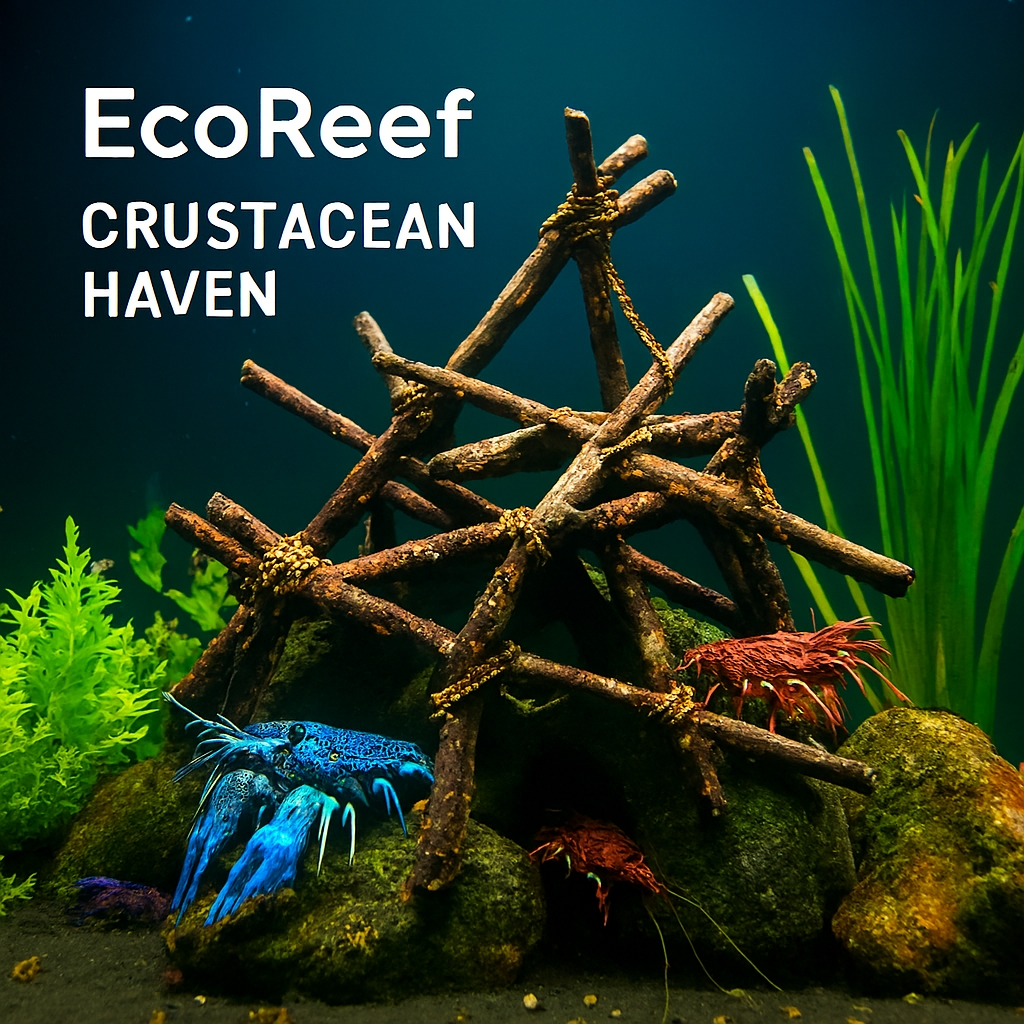The White Whale
Beluga Whale – Arctic Icon And Ecological Mirror
The beluga whale, often called the white whale, is a striking and symbolic presence in Arctic and sub-Arctic waters. Its pale skin, expressive features, and melodic vocalizations have made it a cultural and ecological icon. Indigenous communities have long revered the beluga, embedding it in oral traditions, seasonal rituals, and subsistence practices. As climate change accelerates, the beluga’s habitat is transforming, revealing the cascading effects of warming seas, melting ice, and industrial intrusion. This whale’s ecological role is multifaceted—it regulates prey populations, transports nutrients, and signals ecosystem health. Belugas are social, intelligent, and acoustically gifted, navigating icy waters with evolutionary precision. Their presence in Arctic waters is not just biological—it is cultural, spiritual, and geopolitical. Understanding the beluga’s significance means decoding the Arctic’s future.

Why Are Beluga Whales White
Camouflage, Climate, And Evolutionary Design
Beluga whales are white not because of albinism, but as a result of evolutionary adaptation to Arctic environments. Their pale coloration provides camouflage among sea ice and snow-covered landscapes, helping them avoid predators like polar bears and orcas. This visual blending is especially important during surface breathing and shallow estuary visits. The white skin also reflects sunlight, reducing heat absorption and helping regulate body temperature in summer shallows. Unlike most whales, belugas shed their outer skin layer annually, and the white tone enhances visibility of molting progress. Calves are born gray and gradually lighten over several years, signaling age and social maturity within pods. The absence of pigmentation in their skin does not extend to their eyes or internal tissues, distinguishing them from albino animals. White coloration may also play a role in social signaling, as belugas are highly visual and tactile communicators. Their skin lacks hair and is smooth, enhancing hydrodynamics while maintaining thermal efficiency. In the Arctic, where light, ice, and shadow define survival, the beluga’s whiteness is both a shield and a signature.
| Trait | Ecological Function |
|---|---|
| White Skin | Camouflage in ice-covered environments |
| Sunlight Reflection | Thermal regulation in shallow waters |
| Gradual Color Change | Age signaling and social recognition |
| Non-Albino Pigmentation | Normal vision and internal function |
| Visual Signaling | Social cohesion and pod communication |
Anatomy And Arctic Adaptation
Evolutionary Design For Ice Navigation
Beluga whales possess a suite of anatomical traits tailored for survival in frigid, ice-laden waters. Their thick blubber layer insulates against sub-zero temperatures and stores energy for long migrations. Unlike most whales, belugas lack a dorsal fin, allowing them to swim beneath ice sheets without injury. Their flexible necks enable precise head movements, aiding in navigation and prey detection. The beluga’s melon—a bulbous forehead structure—facilitates echolocation, helping them locate breathing holes and communicate in murky waters. Their skin transitions from gray at birth to white in adulthood, providing camouflage in icy environments. Belugas have a high concentration of myoglobin in their muscles, supporting extended dives and oxygen storage. Their teeth are conical and suited for grasping slippery prey like fish and squid. These anatomical features are not just survival tools—they are evolutionary responses to Arctic pressures. The beluga’s body is a blueprint of adaptation, shaped by millennia of ecological refinement.
| Anatomical Feature | Ecological Function |
|---|---|
| Blubber Layer | Thermal insulation and energy storage |
| No Dorsal Fin | Ice navigation without injury |
| Flexible Neck | Enhanced mobility and foraging precision |
| Melon Structure | Echolocation and acoustic communication |
| White Skin | Camouflage in icy environments |
| High Myoglobin | Extended dive capability |
| Conical Teeth | Prey capture and handling |
Social Intelligence And Communication Networks
Pods, Play, And Vocal Learning
Belugas are among the most socially complex marine mammals, forming pods that range from a few individuals to hundreds. These groups are dynamic, shifting with seasons, reproductive cycles, and environmental conditions. Vocalizations are central to beluga life, with each whale producing a repertoire of chirps, whistles, and clicks. These sounds serve multiple functions—navigation, mating, warning, and social bonding. The beluga’s melon allows it to modulate sound direction and frequency, enhancing acoustic precision. Calves learn vocal patterns from their mothers and pod members, suggesting cultural transmission. Belugas also engage in tactile behaviors like rubbing and nuzzling, which reinforce social bonds. Cooperative hunting and calf protection are common within pods, reflecting shared intelligence and empathy. Social cohesion is vital in navigating ice fields, avoiding predators, and locating prey. Beluga communication is not just biological—it is ecological strategy, cultural inheritance, and emotional expression.
| Social Trait | Ecological Benefit |
|---|---|
| Vocalizations | Navigation, bonding, and coordination |
| Tactile Interaction | Stress reduction and social reinforcement |
| Pod Formation | Cooperative hunting and protection |
| Vocal Learning | Cultural transmission across generations |
| Melon Modulation | Acoustic precision in icy waters |
Feeding Ecology And Nutrient Cycling
Prey, Sediment, And Ecosystem Engineering
Beluga whales are opportunistic feeders, consuming a wide range of prey including fish, squid, crustaceans, and mollusks. Their foraging behavior helps regulate prey populations, maintaining balance within marine food webs. While feeding, belugas often stir up sediment, releasing nutrients into the water column. This activity supports plankton growth and benefits other marine organisms. Seasonal migrations bring nutrients across regions, enriching coastal ecosystems. Belugas adapt their diets based on prey availability, demonstrating ecological flexibility. Their feeding patterns influence the distribution and abundance of prey species. Belugas also serve as prey for polar bears and killer whales, linking upper and lower trophic levels. Their role in nutrient cycling makes them ecological engineers, shaping the productivity of Arctic waters. Understanding beluga feeding ecology reveals the interconnectedness of marine life and the importance of trophic balance.
| Feeding Behavior | Ecological Impact |
|---|---|
| Opportunistic Diet | Prey population regulation |
| Sediment Stirring | Nutrient release and plankton support |
| Seasonal Migration | Nutrient transport across regions |
| Prey Adaptation | Ecological flexibility and resilience |
| Trophic Linkage | Connection between predator and prey |
Climate Pressure And Habitat Disruption
Ice Loss, Noise, And Industrial Intrusion
Climate change is rapidly transforming the Arctic, threatening beluga habitats and survival. Melting sea ice alters migration routes and exposes whales to new predators. Warmer waters shift prey availability, forcing dietary changes that may reduce nutritional intake. Increased human activity in ice-free regions introduces noise pollution and vessel traffic. These disturbances interfere with beluga echolocation and communication. Oil exploration and shipping routes fragment habitats and increase the risk of spills. Contaminants from industrial runoff accumulate in beluga tissues, affecting reproduction and immune function. Climate change also disrupts the timing of seasonal behaviors like calving and molting. These mismatches can lead to reduced reproductive success and calf survival. Long-term habitat degradation threatens not only belugas but the ecosystems they support.
| Climate Impact | Ecological Consequence |
|---|---|
| Ice Loss | Migration disruption and predator exposure |
| Warmer Waters | Prey shifts and nutritional stress |
| Noise Pollution | Communication interference |
| Habitat Fragmentation | Reduced breeding and feeding grounds |
| Contaminant Exposure | Health decline and reproductive risk |
Cultural Significance And Indigenous Knowledge
Belugas As Storytellers Of The North
For Indigenous Arctic communities, beluga whales are more than biological entities—they are cultural relatives and spiritual symbols. Belugas feature prominently in oral histories, seasonal rituals, and subsistence practices. Traditional knowledge systems track beluga migrations, behaviors, and ecological roles with precision. This knowledge is passed down through generations, forming a living archive of environmental insight. Beluga hunting, when practiced sustainably, reflects deep respect and ecological stewardship. Songs, carvings, and ceremonies often depict belugas as messengers between worlds. Their seasonal return marks cycles of abundance, renewal, and community gathering. Indigenous perspectives frame belugas as sentient beings with agency and wisdom. These cultural narratives challenge Western notions of wildlife as passive resources. Recognizing beluga cultural significance is essential for ethical conservation and ecological justice.
| Cultural Role | Community Function |
|---|---|
| Oral Histories | Environmental tracking and storytelling |
| Seasonal Rituals | Community cohesion and ecological timing |
| Subsistence Practices | Sustainable food systems |
| Artistic Depictions | Symbolic representation and reverence |
| Spiritual Beliefs | Sentience and ecological agency |
Migration Patterns And Ecological Timing
Navigating Ice, Temperature, And Prey Cycles Beluga whales migrate seasonally across Arctic and sub-Arctic regions, responding to environmental cues and prey availability. In summer, they move into shallow estuaries and river mouths to molt, calve, and feed. These warmer waters offer protection for calves and abundant food sources. In winter, belugas return to deeper offshore areas where ice coverage is more stable. Migration routes are shaped by sea ice formation, water temperature, and fish spawning cycles. Belugas use echolocation to navigate through ice fields and locate breathing holes. Their timing is precise, often synchronized with ecological events like ice melt and prey movement. These migrations also transport nutrients across regions, enriching coastal ecosystems. Disruption of migration patterns due to climate change can lead to ecological mismatches. Understanding beluga movement is essential for predicting Arctic ecosystem responses to environmental stress.
| Migration Phase | Ecological Function |
|---|---|
| Summer Estuary Entry | Molting, calving, and feeding |
| Winter Offshore Return | Access to deep-water prey and ice shelter |
| Ice Navigation | Breathing hole detection and route safety |
| Nutrient Transport | Ecosystem enrichment across regions |
| Timing Synchronization | Prey availability and reproductive success |

Are Beluga Whales Albino Animals
Natural Whiteness Versus Genetic Albinism Beluga whales are often mistaken for albino animals due to their striking white coloration, but they are not albinos. Their white skin is a species-wide trait that develops gradually as they age, transitioning from gray in infancy to white in adulthood. This coloration is an evolutionary adaptation to Arctic environments, offering camouflage among ice floes and reflecting solar radiation to regulate body temperature. Unlike true albinism, which results from a genetic mutation that inhibits melanin production entirely, belugas possess pigmentation in their eyes and internal tissues. Albino animals typically have pink or red eyes due to the absence of pigment in the iris, a trait not found in belugas. The white skin of belugas is uniform across the species and does not result in the health vulnerabilities associated with albinism. Their coloration is functional, not pathological, and supports survival in polar ecosystems. Belugas also retain normal immune function and sensory perception, unlike many albino animals that suffer from reduced resilience. The misconception likely arises from their nickname “white whale,” which refers to their appearance, not their genetic condition. Understanding this distinction is important for accurate ecological and biological classification.
| Trait Comparison | Beluga Whale | Albino Animal |
|---|---|---|
| Skin Color | Naturally white due to adaptation | White due to lack of melanin |
| Eye Pigment | Normal pigmentation | Pink or red due to pigment absence |
| Genetic Basis | Species trait | Mutation affecting melanin production |
| Health Vulnerability | Normal resilience | Often reduced immunity and sensory issues |
| Ecological Function | Camouflage and heat reflection | No adaptive function |
What An Albino Beluga Whale Would Be Like
Hypothetical Variation And Biological Implications An albino beluga whale would differ significantly from its naturally white counterparts in both appearance and physiology. While belugas are white-skinned, an albino individual would lack all melanin, including in the eyes, gums, and internal tissues. This would likely result in pink or reddish eyes, a trait that could impair vision in bright Arctic light. The skin might appear even paler or translucent, with visible blood vessels beneath the surface. Albino belugas could be more sensitive to ultraviolet radiation, increasing the risk of skin damage and cellular stress. Their immune systems might be compromised, making them more susceptible to infections and environmental toxins. Behavioral differences could emerge due to sensory limitations, affecting navigation, communication, and social bonding. Albino whales in other species, such as the famous humpback Migaloo, have shown increased vulnerability and altered migration patterns. In belugas, such a variation would be extremely rare and likely documented as a genetic anomaly. The lack of camouflage could also increase predation risk, especially in ice-free zones. While visually striking, an albino beluga would face ecological and physiological challenges not shared by its naturally white peers.
| Albino Variation Trait | Hypothetical Impact |
|---|---|
| Eye Color | Pink or red, reduced light tolerance |
| Skin Transparency | Visible blood vessels, increased UV risk |
| Immune Function | Potential vulnerability to disease |
| Sensory Perception | Impaired vision and acoustic response |
| Camouflage Loss | Increased predation exposure |
Reproductive Ecology And Environmental Dependencies
Birth Cycles, Maternal Bonds, And Survival Beluga reproduction is tightly linked to seasonal timing and habitat stability. Calving typically occurs in summer estuaries, where warmer waters support neonatal survival. Mothers nurse their calves for up to two years, forming strong maternal bonds. Calves learn vocalizations, foraging techniques, and social behaviors from their mothers. Belugas reach sexual maturity between 8 and 14 years, depending on environmental stressors. Reproductive success is influenced by prey abundance, contaminant exposure, and noise levels. Industrial activity near calving grounds can disrupt maternal care and stress pregnant females. Climate-induced shifts in estuary temperature may affect calf development and immune function. Belugas exhibit birth synchrony, with many calves born within a short seasonal window. This strategy enhances survival by concentrating maternal care and reducing predator risk.
| Reproductive Trait | Ecological Relevance |
|---|---|
| Summer Calving | Neonatal survival and maternal bonding |
| Extended Nursing | Behavioral learning and immune support |
| Birth Synchrony | Predator avoidance and care concentration |
| Sexual Maturity | Population dynamics and reproductive timing |
| Habitat Sensitivity | Impact of noise and temperature shifts |
Predator And Prey Dynamics In Arctic Waters
Balancing Trophic Levels And Biodiversity Belugas occupy a pivotal position in Arctic food webs, acting as both predator and prey. They consume fish, squid, and crustaceans, regulating populations and maintaining biodiversity. Their feeding behavior prevents overpopulation and supports ecological balance. Belugas are prey for polar bears and killer whales, especially during ice-free seasons. Their presence influences predator hunting strategies and spatial distribution. Belugas often travel in pods to reduce predation risk and increase vigilance. Their migrations affect the movement of prey and predator species across regions. Changes in beluga abundance can ripple through the food web, altering ecosystem structure. Industrial noise and habitat fragmentation may increase predation vulnerability. Belugas also compete with other marine mammals for food, shaping interspecies dynamics.
| Role In Food Web | Ecological Impact |
|---|---|
| Predator Of Fish | Prey population control |
| Prey For Polar Bears | Energy source for apex predators |
| Pod Defense Strategy | Reduced predation risk |
| Migration Influence | Spatial redistribution of species |
| Competition With Others | Shaping interspecies dynamics |
Acoustic Ecology And Arctic Soundscapes
Navigating And Communicating Through Ice Belugas rely on sound to navigate, forage, and maintain social bonds in ice-covered waters. Their vocalizations include chirps, whistles, and clicks, each serving distinct ecological functions. Echolocation allows belugas to detect prey and locate breathing holes under ice. Each individual produces a unique acoustic signature, facilitating recognition and group cohesion. Sound is essential for maintaining social bonds and coordinating group movement. Industrial noise from ships and drilling disrupts these soundscapes, causing stress and disorientation. Belugas may alter their vocalizations in noisy environments, reducing communication effectiveness. Acoustic masking can interfere with mating calls and calf-mother bonding. Research into beluga soundscapes reveals the sophistication of their auditory systems. Protecting acoustic habitats is as vital as preserving physical space, ensuring belugas can thrive in a changing Arctic.
| Acoustic Trait | Ecological Function |
|---|---|
| Echolocation | Navigation and prey detection |
| Vocal Signature | Individual recognition and bonding |
| Soundscape Integrity | Social cohesion and reproductive success |
| Noise Adaptation | Vocal flexibility under stress |
| Acoustic Masking | Communication interference and risk |
Pollution Exposure And Bioaccumulation
Industrial Toxins And Health Decline Belugas are vulnerable to pollution due to their long lifespans and high trophic position. Industrial runoff introduces heavy metals, PCBs, and hydrocarbons into Arctic waters. These contaminants accumulate in beluga blubber and organs, affecting immune and reproductive systems. Calves are especially at risk, receiving toxins through maternal milk. Pollutants can disrupt hormone regulation, leading to developmental abnormalities. Belugas in heavily industrialized regions show higher contaminant loads and lower survival rates. Bioaccumulation also affects beluga prey, compounding exposure through the food chain. Monitoring contaminant levels in belugas provides insight into Arctic pollution trends. Indigenous communities that rely on beluga hunting face health risks from contaminated meat. Reducing industrial discharge and enforcing environmental regulations are critical for beluga health.
| Contaminant Type | Biological Effect |
|---|---|
| Heavy Metals | Organ damage and immune suppression |
| PCBs | Hormonal disruption and reproductive risk |
| Hydrocarbons | Tissue damage and developmental issues |
| Bioaccumulation | Trophic magnification of toxins |
| Maternal Transfer | Calf exposure and health decline |
Symbolic Resonance In Culture And Advocacy
White Whales As Emotional And Cultural Anchors The beluga whale’s pale skin and expressive features have made it a symbol of purity, mystery, and transformation. In literature and art, white whales often represent elusive truths or spiritual quests. Indigenous stories depict belugas as messengers, guides, and protectors of ecological balance. Their seasonal return is celebrated in songs, dances, and carvings that honor ancestral knowledge. Belugas evoke emotional responses in observers, bridging science and spirituality. Conservation campaigns often feature belugas to highlight Arctic fragility and climate urgency. Their image is used in educational materials, museum exhibits, and environmental documentaries. Belugas symbolize the interconnectedness of life, reminding us of our role in ecological stewardship. Their symbolic power enhances their conservation value, making them ambassadors for Arctic protection. Recognizing belugas as cultural icons strengthens the case for inclusive, values-driven environmental policy.
| Symbolic Role | Cultural Impact |
|---|---|
| Literary Archetype | Representation of mystery and truth |
| Indigenous Mythology | Ecological guidance and spiritual agency |
| Artistic Depiction | Emotional resonance and storytelling |
| Conservation Symbol | Advocacy and public engagement |
| Educational Icon | Awareness and ecological literacy |
Thermal Regulation And Ice Survival
Blubber, Blood Flow, And Temperature Control Belugas thrive in some of the coldest marine environments on Earth, thanks to their specialized thermal adaptations. Their thick blubber layer insulates against freezing temperatures and stores energy for long-distance travel. This blubber can account for up to 40 percent of their body mass, offering both warmth and buoyancy. Belugas also regulate blood flow to their extremities, minimizing heat loss in icy waters. Their circulatory system adjusts dynamically, redirecting warmth to vital organs during deep dives. The absence of a dorsal fin reduces surface area and prevents heat dissipation. Belugas often seek out warmer estuarine waters during summer to molt and recover. Their skin thickens seasonally, offering additional protection against cold and abrasion. These physiological traits allow belugas to remain active and alert even in sub-zero conditions. Thermal regulation is not just a survival mechanism—it is a key to ecological endurance in polar ecosystems.
| Thermal Trait | Survival Function |
|---|---|
| Blubber Layer | Insulation and energy storage |
| Blood Flow Regulation | Heat retention in vital organs |
| No Dorsal Fin | Reduced heat loss and ice navigation |
| Seasonal Molting | Skin renewal and temperature adaptation |
| Thickened Skin | Cold protection and abrasion resistance |
Estuarine Habitats And Seasonal Aggregation
Shallow Waters, Calving Grounds, And Nutrient Exchange During summer months, belugas aggregate in estuarine environments that offer warmth, shelter, and abundant prey. These shallow waters are critical for calving, nursing, and molting. Estuaries provide protection from predators and reduce energy expenditure for young calves. The warmer temperatures accelerate skin regeneration and support immune function. Belugas use these habitats to socialize, teach calves, and reinforce pod cohesion. Nutrient-rich estuaries also support prey species like salmon, smelt, and shrimp. Belugas contribute to nutrient cycling by excreting waste and stirring sediment during foraging. These interactions enhance productivity and biodiversity in coastal zones. Estuarine aggregation is a seasonal rhythm that reflects ecological intelligence and cultural continuity. Protecting these habitats is essential for sustaining beluga populations and preserving Arctic marine health.
| Estuarine Function | Ecological Benefit |
|---|---|
| Calving Ground | Neonatal survival and maternal bonding |
| Warm Water Access | Skin regeneration and immune support |
| Predator Refuge | Reduced risk for calves |
| Nutrient Cycling | Ecosystem enrichment and prey support |
| Social Cohesion | Pod bonding and calf learning |
Molting Behavior And Skin Renewal
Seasonal Shedding, Estuary Use, And Health Maintenance Belugas undergo seasonal molting, shedding the outer layer of their skin to maintain health and hygiene. This process typically occurs in warm, shallow estuaries during summer. The increased temperature accelerates skin cell turnover and reduces parasite load. Belugas rub against gravel and sand to facilitate exfoliation and remove dead tissue. Molting improves hydrodynamics, allowing for more efficient swimming and diving. It also enhances sensory perception by renewing skin receptors. The timing of molting is synchronized with calving and feeding, maximizing energy efficiency. Belugas may spend weeks in estuaries during this period, engaging in social and tactile behaviors. Molting is a visible sign of seasonal transition and physiological renewal. Understanding this behavior reveals the intimate connection between belugas and their habitat.
| Molting Trait | Ecological Function |
|---|---|
| Seasonal Shedding | Skin renewal and parasite removal |
| Estuary Use | Temperature support and exfoliation |
| Gravel Rubbing | Dead skin removal and tactile stimulation |
| Hydrodynamic Benefit | Improved swimming efficiency |
| Sensory Enhancement | Renewal of skin-based perception |
Juvenile Development And Learning
Calf Growth, Socialization, And Cultural Transmission Beluga calves are born with gray skin and limited vocal ability, relying heavily on maternal care. Nursing lasts up to two years, during which calves learn essential survival skills. Vocalizations are taught through repetition and mimicry, forming the basis of pod communication. Calves also learn foraging techniques by observing adults and participating in group hunts. Social play is common among juveniles, helping develop coordination and social bonds. Belugas exhibit teaching behaviors, guiding calves through ice fields and estuarine channels. Learning is both instinctual and cultural, passed down through generations. Calves gradually transition from dependence to independence, joining larger pods as they mature. Environmental stressors can disrupt learning and reduce survival rates. Supporting juvenile development is key to long-term population stability and cultural continuity.
| Juvenile Trait | Developmental Role |
|---|---|
| Extended Nursing | Nutritional support and immune protection |
| Vocal Learning | Communication and social integration |
| Observational Foraging | Skill acquisition and ecological awareness |
| Social Play | Coordination and bonding |
| Guided Navigation | Survival training and spatial memory |

Inter-Species Interaction And Ecological Overlap
Competition, Coexistence, And Behavioral Adaptation Belugas share Arctic waters with other marine mammals, including narwhals, seals, and bowhead whales. These species often compete for similar prey, leading to dynamic ecological interactions. Belugas may adjust their foraging strategies to avoid overlap and reduce conflict. In some regions, belugas and narwhals form mixed pods, suggesting cooperative behavior. Belugas also respond to seal vocalizations and may alter their movement patterns accordingly. These interactions reflect behavioral flexibility and ecological intelligence. Competition can intensify during periods of prey scarcity or habitat disruption. Belugas may shift migration timing or dive depth to access untapped resources. Understanding inter-species dynamics reveals the complexity of Arctic marine ecosystems. Coexistence depends on adaptive strategies and ecological balance.
| Interaction Type | Ecological Outcome |
|---|---|
| Prey Competition | Foraging adaptation and niche separation |
| Mixed Pod Formation | Cooperative behavior and social learning |
| Vocal Response | Movement adjustment and awareness |
| Migration Shift | Resource access and conflict avoidance |
| Dive Depth Variation | Ecological flexibility and prey targeting |
Conservation Strategies And Policy Frameworks
Protection Zones, Indigenous Leadership, And Climate Action Effective beluga conservation requires integrated strategies that combine science, policy, and Indigenous knowledge. Marine protected areas can safeguard critical habitats like estuaries and migration corridors. Noise regulations help preserve acoustic environments essential for communication and navigation. Indigenous communities offer deep ecological insight and should lead conservation planning. Climate mitigation policies must address ice loss, pollution, and industrial expansion. Monitoring programs track population trends, health indicators, and habitat changes. International cooperation is vital, as belugas migrate across national boundaries. Public education campaigns raise awareness and build support for conservation efforts. Legal protections must be enforced to prevent habitat degradation and overexploitation. Conservation is not just biological—it is cultural, ethical, and geopolitical. Beluga survival depends on our collective commitment to ecological justice.
| Conservation Measure | Protective Function |
|---|---|
| Marine Protected Areas | Habitat preservation and migration support |
| Noise Regulation | Acoustic integrity and stress reduction |
| Indigenous Leadership | Cultural insight and ecological stewardship |
| Climate Mitigation | Ice preservation and pollution control |
| International Policy | Cross-border coordination and enforcement |
Ice Navigation And Spatial Memory
Breathing Holes, Route Familiarity, And Environmental Mapping Belugas are expert navigators of ice-covered waters, relying on spatial memory and echolocation to survive. They remember the locations of breathing holes and ice channels from previous seasons. This memory allows them to travel efficiently through shifting ice landscapes. Belugas use sound to detect thin ice and avoid entrapment. Their flexible necks help them scan surroundings and adjust course mid-swim. Pods often follow experienced individuals who lead routes through complex ice fields. These leaders pass knowledge to younger whales, reinforcing migratory traditions. Belugas can detect subtle changes in ice acoustics, signaling danger or opportunity. Spatial memory is critical during winter when ice coverage is extensive and unpredictable. Ice navigation is not just instinct—it is learned, shared, and culturally embedded.
| Navigation Trait | Ecological Function |
|---|---|
| Breathing Hole Memory | Survival during extended ice coverage |
| Echolocation Mapping | Detection of ice thickness and channels |
| Flexible Neck Movement | Enhanced scanning and route adjustment |
| Pod Leadership | Knowledge transmission and safety |
| Acoustic Ice Detection | Risk avoidance and spatial awareness |
Dietary Flexibility And Regional Variation
Fish, Crustaceans, And Seasonal Shifts Belugas exhibit remarkable dietary flexibility, adapting their feeding habits to regional prey availability. In estuaries, they consume salmon, smelt, and shrimp, while offshore diets include cod, squid, and octopus. This adaptability allows belugas to thrive in diverse habitats and respond to seasonal changes. Their conical teeth are suited for grasping slippery prey rather than chewing. Belugas often use suction feeding, drawing prey into their mouths with rapid pressure changes. Diet composition varies by age, with calves relying on maternal milk and juveniles transitioning to small fish. Regional prey shifts can influence migration timing and pod behavior. Belugas may follow spawning fish into rivers or concentrate in areas with high crustacean density. Dietary flexibility supports resilience in changing ecosystems. Understanding beluga diets helps predict responses to climate-driven prey redistribution.
| Prey Type | Feeding Context |
|---|---|
| Salmon And Smelt | Estuarine summer feeding |
| Cod And Squid | Offshore winter foraging |
| Shrimp And Crustaceans | Nutrient-rich shallow zones |
| Suction Feeding | Prey capture without chewing |
| Age-Based Diet Shift | Developmental transition and growth |
Genetic Diversity And Population Structure
Subpopulations, Isolation, And Adaptive Potential Beluga populations are divided into genetically distinct subgroups across the Arctic and sub-Arctic. These subpopulations reflect historical migration patterns, geographic isolation, and environmental pressures. Genetic diversity supports adaptive potential, allowing belugas to respond to changing conditions. Some populations are more vulnerable due to low genetic variation and small size. Isolation can lead to unique vocal dialects and behavioral traits. Genetic studies help identify conservation priorities and track population health. Belugas in the Cook Inlet, for example, show signs of genetic bottleneck and reduced resilience. Maintaining connectivity between populations is essential for long-term survival. Human activity can fragment habitats and reduce gene flow. Protecting genetic diversity ensures ecological flexibility and evolutionary continuity.
| Genetic Feature | Ecological Relevance |
|---|---|
| Subpopulation Identity | Regional adaptation and behavioral traits |
| Genetic Variation | Resilience to environmental change |
| Vocal Dialects | Cultural differentiation and communication |
| Bottleneck Risk | Reduced adaptability and survival |
| Habitat Connectivity | Gene flow and population stability |
Behavioral Plasticity And Environmental Response
Flexibility, Innovation, And Survival Strategies Belugas demonstrate behavioral plasticity, adjusting their actions in response to environmental changes. They alter migration routes, feeding techniques, and vocalizations based on habitat conditions. Belugas may explore new estuaries or shift dive depths to access prey. In noisy environments, they modify call frequency and duration to maintain communication. Behavioral innovation is common in disturbed habitats, where belugas experiment with new strategies. Calves learn adaptive behaviors from adults, reinforcing cultural transmission. Plasticity supports survival in rapidly changing Arctic ecosystems. Belugas also exhibit play behavior, which may enhance learning and stress reduction. Their ability to adapt behaviorally reflects cognitive complexity and ecological intelligence. Monitoring behavioral shifts helps assess environmental impact and conservation effectiveness.
| Behavioral Trait | Adaptive Function |
|---|---|
| Migration Adjustment | Response to ice loss and prey movement |
| Vocal Modification | Communication in noisy habitats |
| Dive Depth Shift | Access to alternative prey sources |
| Cultural Transmission | Learning and innovation across generations |
| Play Behavior | Cognitive development and stress relief |
Ecotourism And Ethical Engagement
Observation, Education, And Habitat Respect Belugas are increasingly featured in ecotourism ventures that promote Arctic awareness and conservation. Whale-watching tours offer opportunities to observe belugas in their natural habitats. Ethical guidelines emphasize distance, silence, and non-intrusion to protect whale behavior. Ecotourism can generate funding for research and habitat protection. Educational programs use beluga encounters to teach about climate change and marine ecology. Indigenous-led tours integrate cultural knowledge and ecological stewardship. Belugas respond to boat presence with curiosity or avoidance, depending on noise and proximity. Overexposure can lead to stress and habitat abandonment. Responsible ecotourism balances human interest with beluga welfare. When done respectfully, it fosters empathy, education, and conservation support.
| Ecotourism Element | Conservation Value |
|---|---|
| Whale-Watching Tours | Public engagement and awareness |
| Ethical Guidelines | Behavioral protection and habitat respect |
| Indigenous Leadership | Cultural education and stewardship |
| Educational Outreach | Climate literacy and ecological empathy |
| Funding Generation | Research support and habitat preservation |
Legacy And Future Of Arctic Stewardship
Symbolism, Policy, And Intergenerational Responsibility Belugas symbolize the fragility and resilience of Arctic ecosystems. Their survival reflects the health of ice, water, and biodiversity. As climate change accelerates, belugas become indicators of ecological tipping points. Their cultural and ecological roles demand inclusive, long-term stewardship. Indigenous knowledge systems offer models of sustainability rooted in respect and reciprocity. Policy frameworks must integrate science, tradition, and community leadership. Belugas remind us that conservation is not just technical—it is emotional, ethical, and symbolic. Protecting their future means protecting the Arctic as a whole. Intergenerational responsibility calls for education, advocacy, and action. The legacy of belugas is a call to restore balance between humanity and nature.
| Legacy Element | Stewardship Implication |
|---|---|
| Ecological Indicator | Climate impact and ecosystem health |
| Cultural Symbolism | Emotional connection and ethical framing |
| Indigenous Knowledge | Sustainable models and ecological insight |
| Policy Integration | Inclusive governance and long-term planning |
| Intergenerational Duty | Education and continuity of care |
Seasonal Rhythms And Ecological Synchrony
Timing, Temperature, And Biological Cycles Beluga whales operate within finely tuned seasonal rhythms that mirror the Arctic’s ecological pulse. Their migrations, molting, calving, and feeding are synchronized with ice melt, prey availability, and temperature shifts. These cycles ensure energy efficiency and reproductive success across generations. Belugas return to the same estuaries year after year, reinforcing spatial memory and habitat fidelity. Seasonal timing also affects vocal behavior, with increased communication during calving and social aggregation. Ice coverage dictates movement patterns, forcing belugas to adapt routes and timing annually. Prey species like salmon and smelt follow similar seasonal cues, aligning with beluga presence. Disruption of these rhythms due to climate change can lead to ecological mismatches and reduced survival. Belugas are not passive participants—they actively shape and respond to seasonal dynamics. Their biological calendar is a living reflection of Arctic time.
| Seasonal Element | Ecological Role |
|---|---|
| Migration Timing | Energy conservation and prey access |
| Calving Synchrony | Neonatal survival and maternal care |
| Molting Season | Skin renewal and parasite control |
| Vocal Activity Peaks | Social bonding and coordination |
| Prey Alignment | Nutritional support and ecosystem balance |
Cognitive Complexity And Emotional Intelligence
Problem Solving, Empathy, And Social Awareness Belugas exhibit signs of advanced cognition, including problem-solving, emotional awareness, and social learning. Their ability to adapt vocalizations and behaviors suggests flexible intelligence. Belugas recognize individual pod members and respond to emotional cues like distress calls. They engage in play, which may enhance cognitive development and reduce stress. Observations show belugas using tools, such as manipulating objects with their mouths or flippers. Calves learn through imitation, reinforcing cultural transmission and memory. Belugas also show empathy, assisting injured pod members and responding to calf distress. Their social structures resemble those of elephants and primates in complexity. Emotional intelligence supports group cohesion and survival in harsh environments. Cognitive traits are not just curiosities—they are ecological assets. Belugas challenge traditional boundaries between instinct and intelligence.
| Cognitive Trait | Ecological Benefit |
|---|---|
| Vocal Adaptation | Communication flexibility and resilience |
| Individual Recognition | Social cohesion and memory |
| Play Behavior | Learning and emotional regulation |
| Tool Use | Problem-solving and environmental interaction |
| Empathy Response | Group support and survival enhancement |
Hydrodynamics And Movement Efficiency
Body Shape, Swimming Technique, And Energy Use Belugas are built for efficient movement through icy, turbulent waters. Their fusiform body shape reduces drag and supports streamlined swimming. The absence of a dorsal fin minimizes resistance and allows passage under ice sheets. Belugas use their flippers and tail flukes for precise maneuvering and propulsion. Their flexible necks enable head rotation, aiding in navigation and prey detection. Swimming speed varies with activity—slow during social interaction, fast during escape or hunting. Belugas can dive to depths of 700 meters, adjusting buoyancy through lung compression and blubber distribution. Their movement patterns reflect energy conservation strategies adapted to Arctic conditions. Pods often synchronize swimming to maintain cohesion and reduce individual effort. Hydrodynamic efficiency supports long migrations and complex foraging behavior. Beluga movement is a choreography of biology and environment.
| Movement Feature | Functional Advantage |
|---|---|
| Fusiform Shape | Reduced drag and streamlined swimming |
| No Dorsal Fin | Ice navigation and resistance minimization |
| Flipper Control | Maneuvering and propulsion |
| Neck Flexibility | Navigation and prey detection |
| Synchronized Swimming | Energy conservation and pod cohesion |
Ecological Indicators And Environmental Monitoring
Sentinels, Stress Signals, And Climate Metrics Belugas serve as ecological indicators, reflecting the health of Arctic marine systems. Their population trends, behavior, and physiology offer insights into environmental change. Contaminant levels in beluga tissues reveal pollution patterns and industrial impact. Changes in migration and vocalization signal habitat disruption and noise stress. Beluga reproductive success correlates with prey abundance and ice stability. Monitoring belugas helps track climate effects on biodiversity and ecosystem function. Their role as sentinels supports early warning systems for Arctic degradation. Belugas also indicate shifts in trophic dynamics and species distribution. Conservationists use beluga data to guide policy and habitat protection. These whales are not just subjects of study—they are partners in ecological vigilance. Their presence is a living metric of environmental integrity.
| Indicator Type | Monitoring Insight |
|---|---|
| Tissue Contaminants | Pollution levels and industrial impact |
| Migration Shifts | Ice loss and habitat fragmentation |
| Vocalization Changes | Noise pollution and behavioral stress |
| Reproductive Trends | Prey availability and climate stability |
| Trophic Role | Biodiversity and ecosystem balance |

Symbolic Restoration And Cultural Healing
Legacy, Memory, And Ecological Reconnection Belugas hold symbolic power in cultural narratives of healing, restoration, and continuity. Their seasonal return marks cycles of renewal and ancestral connection. Indigenous stories frame belugas as guides between worlds, linking ocean, ice, and spirit. Artistic depictions often show belugas emerging from mist or ice, representing transformation. Conservation efforts that include cultural symbolism foster deeper public engagement. Belugas evoke empathy and inspire ecological responsibility across generations. Their image is used in storytelling, education, and advocacy to reconnect people with nature. Cultural healing through beluga symbolism supports reconciliation and ecological justice. These whales are not just biological entities—they are emotional and spiritual anchors. Restoring beluga populations is part of restoring meaning in Arctic landscapes. Their legacy is a bridge between science, culture, and hope.
| Symbolic Element | Cultural Function |
|---|---|
| Seasonal Return | Renewal and ancestral connection |
| Mythic Role | Guidance and ecological wisdom |
| Artistic Representation | Emotional resonance and transformation |
| Advocacy Icon | Public engagement and ecological empathy |
| Reconciliation Symbol | Cultural healing and justice |
Conclusion And Call To Action
Stewardship, Solidarity, And Ecological Legacy The beluga whale is more than a marine mammal—it is a keystone species, cultural icon, and ecological mirror. Its survival reflects the health of Arctic waters, the wisdom of Indigenous stewardship, and the urgency of climate action. Belugas teach us about adaptation, cooperation, and resilience in the face of change. Their biology, behavior, and symbolism offer a blueprint for ecological restoration. Protecting belugas means protecting the rhythms of ice, the integrity of soundscapes, and the continuity of cultural memory. Conservation must be inclusive, science-driven, and rooted in respect for traditional knowledge. Every policy, every habitat, and every voice matters in this shared effort. The white whale calls us to listen, learn, and act with purpose. Its legacy is not frozen in time—it is alive in every ripple of Arctic water. Let the beluga be our guide toward a more just and balanced world.
Join The Discussion
Belugas are ecological engineers, cultural storytellers, and sentinels of Arctic change. Their survival depends on our ability to mitigate climate disruption, reduce pollution, and honor Indigenous leadership. What role should belugas play in shaping future conservation strategies? How can we balance human activity with the needs of Arctic ecosystems?
#BelugaWhale #WhiteWhale #ArcticEcology #MarineConservation #ClimateJustice #IndigenousStewardship #OceanBiodiversity #SymbolicRestoration #EcologicalLegacy #EnvironmentalEthics












Leave a Reply